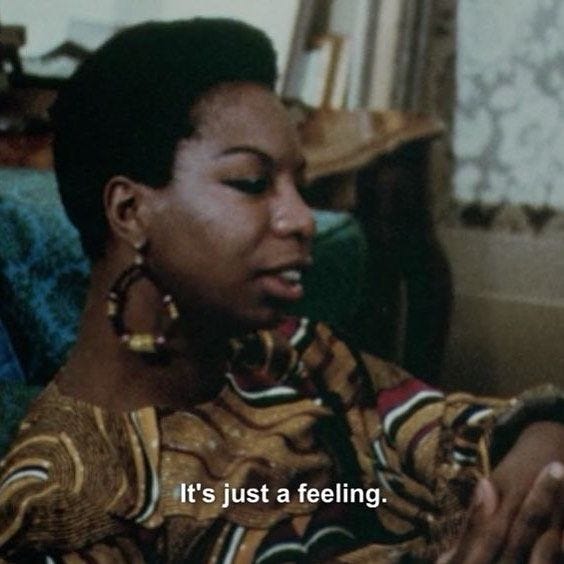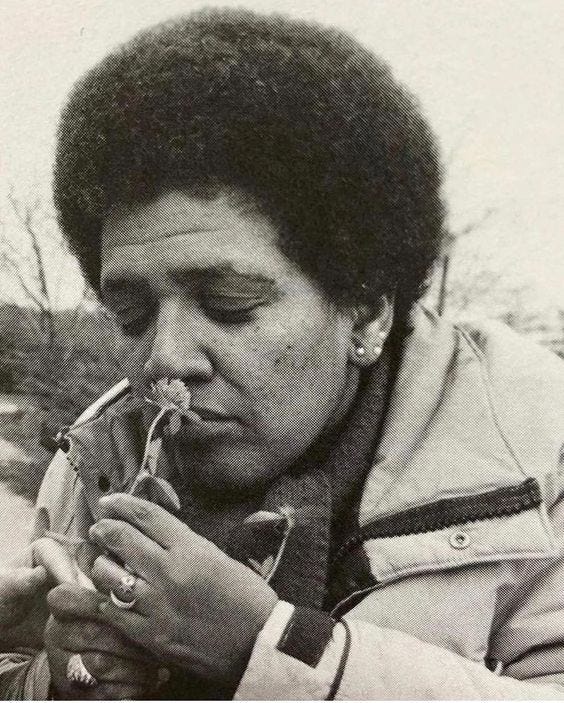Unlearning performative gratitude.
Reflections and thoughts on the practice of appreciation in therapy and beyond.
For me, growing up in Caribbean culture, gratitude (especially towards my elders) was both a taught obligation and a social norm. Expressing thanks and acknowledging your appreciation of others loudly, publicly and even indirectly through reciprocated actions was an ingrained childhood expectation. Passed on through my parents, family friends, and even strangers, these (often forced) moments of appreciation were just regular parts of my life growing up.
It’s also not just Caribbean culture. Saying thank you and sharing appreciation through words, actions and gifts, is for many folks, families and cultures, a norm, routine and habit. That being said, it is not a surprise to me that expressing gratitude and showing thanks to myself and to others is today one of my most important and cherished values.
Being a core part of my values, and a taught cultural norm, I rarely question the way I show thanks. As a therapist, I’ve recommended gratitude journals, gratitude practices, list making— you name it, I’ve probably talked about it in some way. Gratitude even shows up time and time again in the research, and is a regular recommendation for improving mood, relationships and workplace practices by many wellness practitioners, including myself.
Recently, however, I’ve been examining gratitude as a habit— directed at both others and myself in a much different way. Let me be clear though— I am not contesting the positive impact of teaching gratitude, showing appreciation to others, or even the benefits it can have when we focus it inward. There is so much we can still learn about the process of gratitude and how grateful living improves our lives.
However, I have been observing how gratitude feels different when it is felt and embodied, rather than simply routinized and habitual.
I meet true gratitude for others and myself when I stop performing it, listing it or disassociating it from the actual feelings and emotions it brings.
Like my snap habit of saying thank you, making regular gratitude lists and expressing appreciation became so routine that at some point, gratitude lost it’s lustre. I became disembodied from the real connection I sought and the interactions I wanted to truly nourish. My gratitude practice was instinctual rather than intentional.
This realization was pretty jarring and somewhat shameful. However, it has offered me clarity on why the common recommendation in wellness culture of making gratitude lists or expressing appreciation has evolved into something that has at times felt disconnected from the deep feelings behind them.
Feeling appreciative, thankful and grateful aren’t solo experiences either. They exist with our other feelings and emotions, and come with plenty of nuance, complexity and context that is emotionally flattened when left unexamined and unexplored.
Re-thinking gratitude has led me to a deeper, more intentional process of exploring the sometimes counterintuitive feelings and emotions that come with it. Like guilt, sadness, fear or shame.
Recently, I was having dinner with a close friend, who was sharing their experiences from recent travels. They had met someone during their trip who had impacted them in such a profound way, that when they returned home they were struck by a sense of overwhelming grief and loss.
As they described their gratitude for this person— specifically their generosity, wisdom and time helping them during the trip, my friend described feeling disoriented by the sadness they felt when returning home. “I’m so filled with thankfulness for them. And yet I’m so sad for myself. I don’t think I’ll ever see them again. Maybe they don’t even feel the same way as I do.”
For my friend, their gratitude for this person was meaningful and cherished, and also paired with intense loneliness and grief. That evening, as we chatted, reflected and ate, I listened to their valid emotional reckoning around the confusing feelings that their gratefulness brought up for them.
We talked about how strange it felt to be grateful for someone or something knowing that reciprocation and shared gratitude isn’t an inevitable process. In this case, it wasn’t malicious or reminiscent of problematic relationship imbalances. It simply was a feeling that emerged, and due to the circumstances had nowhere to really go.
It reminded me of how as therapists, we often do, share and give so much of ourselves for other’s healing and wisdom that also may never be replicated or shared. Truthfully, the culture of therapy (especially therapy as it is taught in colonial systems) is not a culture of reciprocation. We are expected to give and care without any need to hear, acknowledge or accept thanks in exchange. Many of us enjoy this dynamic. There can be a sort of freedom in supporting others without the anxiety of mutuality. The problem though, is that like myself, and my friend on her travels, we don’t exist in a vacuum.
Over the years, I’ve had countless clients share appreciation and gratitude for the work that I do. It’s a beautiful experience. Part of me wants to graciously acknowledge the gratitude and shift the focus back toward the client, sidestepping the discomfort of being “seen” as a person taking up space in the therapeutic relationship this way. Another part of me wants to reciprocate the feeling, express the ways I too am grateful for the work we do, bask in the warmth of that connection, and sit with them in that feeling.
And sometimes, I’ve found myself so caught up in the routine and habit of caring in my therapy role that until clients express their thanks, I forget to be present in the connection to even acknowledge and feel it.
There’s plenty of overthinking too: How much time should we spend on this? Can I be honest about how much I’m grateful for them too? Will they be turned off when I share my thoughts if it doesn’t match their own expectations of how I should respond?
I’ll be honest that depending on the context, the client, and the timing of it all, there are pros and cons for all of these responses in the therapy room.
I know I’m not alone in the observation of this frustrated gratitude in therapy. I’ve heard folks begrudgingly say they hated when their therapist brought any part of their personality, opinions or lived experiences into the room. Likewise I’ve heard plenty of people bemoan how hard it is to find a therapist that can meet them with their humanity, sharing their own feelings during the work. It’s a tough balance to find. Everyone is different. We all come from our own cultural positions around gratitude. My intersections of being a Caribbean immigrant, a Black woman, and a therapist trained in a predominately white, US based institution, all impact this analysis (and probably over-analysis to be quite honest).
There are other times I feel so moved by a therapy session almost to the point of tears. I am so full to the brim with gratefulness and emotion that I often will stop short of showing my feelings in this way. I have held back my true depth of feeling to protect the therapeutic relationship, and also because in therapy— it’s not about me.
I’ve come very close, but I’ve never cried in session. Shared gratitude and intense emotional connection, although something therapists encourage is rarely exactly bi-directional between therapist and client. And like I’ve said before. There’s plenty of good reasons for that.
Like my friend sharing her experiences on her travels, I’m sure many of my own clients may feel lonely in the knowledge that I am both doing my job, and impacting their life in a significant way. There is a transactional experience that arises in these instances, a transparent wall that should be acknowledged, and respected to maintain client safety, therapeutic boundaries and honestly, to prevent emotional burnout.
They call this in the therapy world: Safe and Effective Use of Self, which “refers to the psychotherapist’s learned capacity to understand [their] own subjective context and patterns of interaction as they inform [their] participation in the therapeutic relationship with the client. It also speaks to the psychotherapist’s self-reflective use of [their] personality, insights, perceptions and judgments in order to optimize interactions with clients in the therapeutic process.” (CRPO)
This leads me to wonder: what does gratitude mean in relationships when it isn’t shared or understood by others in the same way? What does gratitude look like when it is accompanied by grief or shame? Does gratitude change for us when it is complicated by other emotional experiences like loneliness or anger? When we place this complexity within our cultural expectations, or our blanket wellness recommendations around gratitude, do we capture the full picture of being and feeling grateful?
How do we move from just saying we are grateful to actually feeling grateful? How do we honour the depth of emotional connections while maintaining safe boundaries and supportive caregiving without needing anything back?
This reflection doesn’t come with answers, but I think these questions deserve exploration. Gratitude as a habit, a cultural norm, and a natural expression of feeling and emotion in relationships (including therapeutic ones) all have their own form and functions. I think the key is to allow space for us to bring all of our parts into the rooms that we exist in. To open up conversations that challenge our assumptions around gratitude without adding judgment, shame or existing narratives around how we should show and receive gratitude into the mix.
In the words of Nina Simone:
And feelings are there to be explored. To be felt. To be named. Maybe there isn’t supposed to be an answer here for the way we should express and embody gratitude just yet. Maybe we just need to focus on feeling it and see where that takes us.
Until next time,
—Meg
Some links + visual inspiration:
this toolkit for direct action you can take to support p@lestine.
toronto friends: come collage with me!
this event is already sold out 🙃 but add your name here for the virtual experience coming soon ✨🎨
these beautiful bracelets (gifted to me) designed to disrupt anxious spirals
this website lets you listen to forest sounds and nature all over the the world.
Feelings, Healing is supported by you, the readers. This newsletter is a place for writing words that support sensitivity, self-exploration and curiosity for inner growth and wisdom. If you enjoyed this post and others, please share, subscribe or leave a comment 🤎






I googled "performative gratitude" (because I want to discuss this topic in a future substack article) and I found your article. I appreciate your raw authenticity about the role of gratitude in therapy. This resonates with me because I'm part of a team that just received a grant to study gratitude in psychotherapy! I'm hoping to learn more from you.
A great reminder! Love it